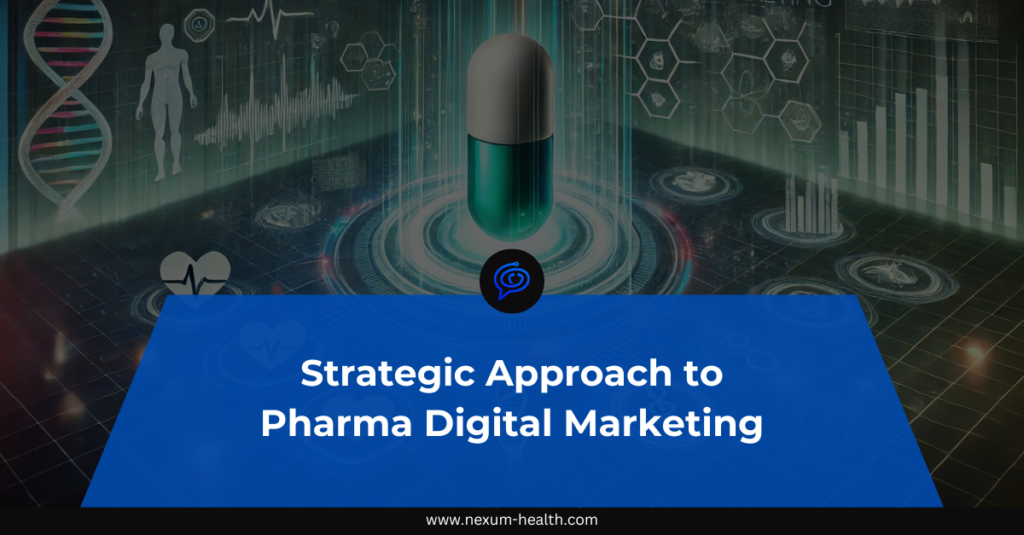The pre-launch phase stands as a pivotal period, often determining the trajectory of a drug’s success or failure in the market. This phase, spanning from the conclusion of clinical trials to the official market release, holds significant weight in shaping a product’s positioning, market acceptance, and overall commercial viability.
The journey from laboratory innovation to patient access is multifaceted, requiring meticulous planning, regulatory adherence, and strategic decision-making. Understanding the nuances of the pre-launch phase is essential for pharmaceutical companies to overcome this complex terrain effectively.
Regulatory Sector
At the heart of the pre-launch phase lies the regulatory process, a critical aspect that demands careful attention and adherence. Regulatory agencies such as the Food and Drug Administration (FDA) in the United States or the European Medicines Agency (EMA) in Europe play a pivotal role in evaluating the safety, efficacy, and quality of pharmaceutical products before granting approval for market entry. Overcoming the pathways of regulatory submissions, responding to inquiries, and addressing potential concerns are integral components of the pre-launch journey.
Building Strategic Alliances
Collaboration is key during the pre-launch phase, as pharmaceutical companies seek to forge strategic alliances with various stakeholders. Engaging healthcare professionals, patient advocacy groups, payers, and key opinion leaders early in the process can provide invaluable insights into patient needs, market dynamics, and therapeutic area. These collaborations not only foster a deeper understanding of the target audience but also help in gathering support and buy-in for the upcoming product.
A comprehensive understanding of the market is indispensable for a successful pre-launch strategy. Conducting thorough market assessments, competitor analyses, and patient segmentation studies can elucidate market dynamics, unmet needs, and potential barriers to adoption. By identifying target patient populations, understanding prescribing patterns, and assessing reimbursement pathways, pharmaceutical companies can adapt their pre-launch initiatives to address specific market demands effectively.
Investing in Education and Awareness
Education and awareness initiatives play a crucial role in laying the groundwork for successful product launches. By providing healthcare professionals, patients, and caregivers with accurate, evidence-based information about the upcoming therapy, pharmaceutical companies can cultivate trust, build anticipation, and enhance adoption rates post-launch. From scientific symposiums and educational materials to digital platforms and patient support programs, investing in education and awareness initiatives during the pre-launch phase can yield significant dividends in the long run.
Setting the Stage for Success
Strategic planning during the pre-launch phase is akin to laying the foundation for a successful market entry. This stage encompasses a series of strategic decisions and actions aimed at maximising the commercial potential of a new drug while mitigating risks and uncertainties along the way. From defining market objectives to creating robust go-to-market strategies, strategic planning sets the stage for a seamless transition from development to commercialisation.
Defining Clear Objectives
At the outset of the pre-launch phase, pharmaceutical companies must articulate clear and measurable objectives that align with their overall business goals. Whether the aim is to capture a specific market share, achieve revenue targets, or establish thought leadership in a therapeutic area, setting concrete objectives provides a guiding framework for subsequent planning and execution efforts.
Stakeholder Engagement and Risk Mitigation
Effective stakeholder engagement is instrumental in gathering support and alignment for the upcoming product launch. From healthcare professionals and patient advocacy groups to payers and regulatory authorities, engaging key stakeholders early in the process fosters collaboration, builds trust, and ensures a smooth transition from development to commercialisation. By soliciting feedback, addressing concerns, and aligning interests, pharmaceutical companies can cultivate a network of advocates who champion their product within the healthcare ecosystem.
While strategic planning aims to capitalise on opportunities, it also entails the identification and mitigation of potential risks and uncertainties. From regulatory hurdles and market volatility to competitive threats and supply chain disruptions, pharmaceutical companies must develop robust contingency plans to navigate unforeseen challenges effectively. By proactively identifying risks, scenario planning, and implementing mitigation strategies, companies can safeguard their pre-launch investments and maintain agility in a dynamic marketplace.
Preparing for Approval
Regulatory approval serves as a gateway to market entry, validating the safety, efficacy, and quality of a new drug before it reaches patients. However, achieving regulatory clearance is a complex and rigorous process that demands meticulous preparation, adherence to guidelines, and effective communication with regulatory authorities.
The regulatory pathway for pharmaceutical approval varies across regions and depends on factors such as the therapeutic indication, drug class, and intended patient population. In the United States, for instance, pharmaceutical companies typically submit a New Drug Application (NDA) or a Biologics License Application (BLA) to the FDA, while in Europe, they may seek approval through a Marketing Authorisation Application (MAA) submitted to the EMA. Understanding the nuances of these regulatory pathways is crucial for devising a comprehensive pre-launch strategy.
Conducting Clinical Trials
Clinical trials serve as the cornerstone of regulatory submissions, providing essential data on the safety, efficacy, and pharmacokinetics of a new drug. During the pre-launch phase, pharmaceutical companies must design and execute clinical trials in accordance with regulatory requirements and industry best practices. This entails recruiting suitable patient populations, collecting robust clinical data, and adhering to ethical standards outlined in Good Clinical Practice (GCP) guidelines.
The preparation of regulatory submissions is a meticulous process that requires attention to detail and adherence to regulatory guidelines. Pharmaceutical companies must compile comprehensive dossiers containing preclinical and clinical data, manufacturing information, pharmacovigilance plans, and risk management strategies. These submissions undergo rigorous review by regulatory authorities, who evaluate the evidence supporting the safety, efficacy, and quality of the drug before granting approval.
Engaging with Regulatory Authorities
Effective communication and collaboration with regulatory authorities are essential components of navigating the regulatory requirements. Pharmaceutical companies must engage proactively with regulatory agencies, seeking guidance, addressing inquiries, and providing clarifications throughout the review process. By fostering transparent and constructive dialogue with regulators, companies can expedite the approval process and mitigate potential delays or deficiencies.
Regulatory compliance extends beyond the initial approval stage, encompassing post-market surveillance and pharmacovigilance activities. Pharmaceutical companies are responsible for monitoring the safety and efficacy of their products post-launch, reporting adverse events, and implementing risk mitigation measures as necessary. By maintaining vigilance and adhering to regulatory requirements, companies can ensure the ongoing safety and quality of their products throughout their lifecycle.
Market Analysis and Targeting
Market analysis and targeting are fundamental steps during the pre-launch phase, guiding companies in identifying key opportunities and understanding the area in which their product will compete. This process involves comprehensive research, data analysis, and strategic decision-making to effectively position a new drug for success in the market.
Before launching a new pharmaceutical product, companies must conduct thorough market assessments to gain insights into the dynamics of the healthcare environment. This includes analysing factors such as disease prevalence, treatment patterns, patient demographics, and existing therapeutic options. By understanding market trends and unmet needs, companies can identify opportunities for differentiation and market entry.
Segmenting the Target Audience
One of the critical aspects of market analysis is segmenting the target audience based on various criteria such as demographics, disease severity, treatment history, and preferences. By segmenting the market, companies can tailor their marketing strategies, messaging, and engagement tactics to resonate with specific patient populations, healthcare providers, and other stakeholders. This targeted approach enhances the relevance and effectiveness of pre-launch initiatives.
A comprehensive analysis of the competitive environment is essential for pharmaceutical companies to identify potential competitors, assess their strengths and weaknesses, and differentiate their product offering. By benchmarking against existing treatments, understanding competitor strategies, and assessing market share dynamics, companies can devise strategies to position their product effectively and capture market share upon launch.
Market Assessment and Competitive Analysis
A comprehensive understanding of the market is essential for informed decision-making during the pre-launch phase. Conducting thorough market assessments, competitor analyses, and SWOT (Strengths, Weaknesses, Opportunities, Threats) analyses can reveal key insights into market dynamics, competitive positioning, and potential areas of differentiation. By identifying market gaps, unmet needs, and competitive threats early on, pharmaceutical companies can refine their strategies to capitalise on market opportunities effectively.
The development of robust go-to-market strategies lies at the core of strategic planning in the pre-launch phase. These strategies encompass a myriad of elements, including product positioning, pricing strategies, distribution channels, promotional tactics, and market access initiatives. By integrating insights from market research, payer dynamics, and regulatory, pharmaceutical companies can tailor their go-to-market strategies to resonate with key stakeholders and maximise market penetration.
Understanding Payer Dynamics
In addition to patient and physician perspectives, understanding payer dynamics is crucial during the pre-launch phase. Pharmaceutical companies must evaluate reimbursement policies, formulary decisions, and pricing considerations to ensure market access and reimbursement for their product. By engaging with payers early in the process and demonstrating the value proposition of their product, companies can secure favourable coverage and access for patients.
Forecasting market demand is an integral part of pre-launch planning, helping companies anticipate sales potential, allocate resources effectively, and optimise supply chain logistics. By leveraging data analytics, epidemiological projections, and market research insights, companies can develop accurate demand forecasts and optimise inventory levels to meet market demand upon launch. This proactive approach minimises the risk of supply shortages or excess inventory, ensuring a seamless transition from pre-launch to commercialisation.
Key Considerations in Pre-Launch Marketing Strategies
Creating awareness and generating anticipation are central objectives of pre-launch marketing strategies. Pharmaceutical companies employ various tactics, such as medical education programs, scientific publications, and disease awareness campaigns, to educate healthcare professionals and patients about the disease state and the potential benefits of the upcoming treatment. By building anticipation and excitement around the new drug, companies can lay the groundwork for successful market adoption upon launch.
Effective stakeholder engagement is critical in pre-launch marketing, as it involves building relationships and gathering support from key stakeholders such as healthcare professionals, patient advocacy groups, payers, and regulatory authorities. Pharmaceutical companies leverage a range of communication channels, including advisory boards, conferences, and digital platforms, to engage stakeholders and solicit feedback on the new drug. By involving stakeholders early in the process and addressing their concerns and perspectives, companies can gain insights that inform their marketing strategies and enhance stakeholder buy-in.
Compelling Messaging and Educational Materials
Creating compelling messaging and educational materials is essential for conveying the value proposition of the new drug to healthcare professionals, patients, and other stakeholders. Pre-launch marketing materials should communicate key clinical data, differentiation factors, and patient benefits in a clear and persuasive manner. Additionally, educational initiatives, such as continuing medical education (CME) programs and patient support resources, help build understanding and confidence in the new treatment among healthcare providers and patients alike.
Measuring and Optimising Campaign Effectiveness
Measuring the effectiveness of pre-launch marketing campaigns is crucial for assessing impact, refining strategies, and optimising resource allocation. Pharmaceutical companies employ various metrics, such as brand awareness, physician engagement, and market share projections, to evaluate the success of their marketing initiatives. By tracking key performance indicators and soliciting feedback from stakeholders, companies can identify areas for improvement and refine their pre-launch marketing strategies to maximise impact and achieve their commercial objectives.
Fine-Tuning Launch Plans
Pharmaceutical companies utilise a range of market research techniques, including surveys, focus groups, and data analytics, to gather insights into market dynamics, competitor strategies, and customer preferences. By analysing market trends, identifying key opportunities, and understanding customer needs, companies can tailor their launch plans to capitalise on market opportunities and address potential challenges.
Predictive modelling and forecasting play a crucial role in estimating market demand, revenue projections, and resource requirements for the new drug. By leveraging historical data, epidemiological trends, and market segmentation analysis, pharmaceutical companies can develop predictive models to forecast sales volumes, market share, and revenue potential. These insights enable companies to optimise pricing strategies, inventory management, and resource allocation to meet market demand effectively.
Customer Segmentation and Competitive Intelligence
Customer segmentation and targeting enable pharmaceutical companies to identify and prioritise high-value customer segments for their pre-launch initiatives. By analysing customer demographics, prescribing behaviours, and channel preferences, companies can tailor their marketing and promotional efforts to resonate with specific customer segments. This targeted approach enhances the relevance and effectiveness of pre-launch activities, maximising engagement and driving adoption among key stakeholders.
Competitive intelligence and benchmarking provide valuable insights into competitor strategies, market positioning, and best practices in the industry. Pharmaceutical companies monitor competitor activities, analyse product profiles, and benchmark performance metrics to identify strengths, weaknesses, and areas for differentiation. By understanding competitor dynamics and market trends, companies can refine their launch plans, capitalise on competitive gaps, and position their product for success in the marketplace.
Real-Time Data Monitoring and Optimisation
Real-time data monitoring enables companies to track the performance of their pre-launch initiatives and make timely adjustments as needed. By leveraging data analytics tools and dashboards, companies can monitor key performance indicators, measure campaign effectiveness, and identify opportunities for optimisation. This agile approach allows companies to course-correct and fine-tune their launch plans in response to evolving market dynamics and customer feedback.
Post-Pre-Launch Strategies
While the pre-launch phase is crucial for laying the groundwork for a successful pharmaceutical product launch, post-pre-launch strategies are equally vital for sustaining momentum and maximising long-term success. These strategies encompass a range of activities aimed at maintaining market momentum, optimising commercial performance, and addressing evolving market dynamics in the post-launch phase.
One of the primary considerations in post-pre-launch strategies is monitoring market performance to assess the impact of the new drug and identify areas for improvement. Pharmaceutical companies track key performance indicators such as sales trends, market share, prescription volumes, and patient feedback to evaluate the effectiveness of their launch strategies and make data-driven decisions to optimise commercial performance.
Gathering Real-World Evidence
Gathering real-world evidence (RWE) is essential for validating the clinical efficacy, safety, and value proposition of the new drug in real-world settings. Post-launch observational studies, patient registries, and health outcomes research initiatives provide valuable insights into the drug’s performance, patient outcomes, and healthcare utilisation patterns beyond the controlled environment of clinical trials. By generating RWE, pharmaceutical companies can enhance market access, support reimbursement decisions, and differentiate their product in the competitive environment.
In the post-pre-launch phase, pharmaceutical companies must continuously refine and adapt their marketing strategies to address evolving market dynamics and stakeholder needs. This may involve adjusting promotional tactics, refining messaging based on feedback from healthcare professionals and patients, and leveraging new communication channels and technologies to engage target audiences effectively. By staying agile and responsive to market feedback, companies can maintain relevance and drive continued adoption of the new drug.
Expanding Indications and Investing in Lifecycle
Expanding indications and market reach is another key strategy in the post-pre-launch phase, enabling pharmaceutical companies to unlock additional value from their product and address unmet needs in new patient populations or therapeutic areas. This may involve pursuing supplemental indications, seeking regulatory approvals for new patient subgroups, or exploring opportunities for geographic expansion into new markets. By broadening the scope of the product’s use, companies can maximise its commercial potential and extend its lifecycle.
Investing in lifecycle management is essential for sustaining the long-term success of the new drug and maximising its value throughout its lifecycle. This includes ongoing investment in research and development to explore new formulations, dosage forms, or delivery mechanisms, as well as initiatives to enhance patient adherence, improve safety profiles, or address emerging market trends. By proactively managing the product lifecycle, pharmaceutical companies can prolong market exclusivity, defend against generic competition, and drive incremental revenue growth.
Ensuring Continued Success
The culmination of a successful pre-launch phase marks the beginning of a new chapter in the lifecycle of a pharmaceutical product. However, the journey towards sustained success does not end with the product’s introduction to the market. Post-pre-launch strategies are integral to ensuring continued momentum, maximising market penetration, and addressing evolving dynamics in the competitive environment. These strategies encompass a range of activities aimed at optimising commercial performance, enhancing patient outcomes, and driving long-term value creation.
Post-pre-launch strategies necessitate a robust system for monitoring and evaluating market performance. Pharmaceutical companies track key performance indicators such as sales volume, market share, prescribing patterns, and patient feedback to gauge the effectiveness of their launch strategies and identify areas for improvement. Continuous monitoring enables companies to adapt their tactics in response to market dynamics and emerging trends, ensuring alignment with commercial objectives.
Adapting Marketing and Promotional Efforts
In the post-pre-launch phase, it’s essential to continually refine and adapt marketing and promotional efforts to maintain relevance and engagement with key stakeholders. This may involve adjusting messaging, optimising promotional channels, and leveraging real-world evidence to reinforce the product’s value proposition. By staying agile and responsive to market feedback, pharmaceutical companies can sustain momentum and drive continued adoption of the product among healthcare professionals and patients.
Investing in comprehensive patient support programs is crucial for optimising patient outcomes and fostering medication adherence in the post-pre-launch phase. These programs may include educational resources, adherence tools, financial assistance initiatives, and access to patient assistance services. By providing ongoing support and guidance to patients, pharmaceutical companies can improve treatment adherence, enhance patient satisfaction, and differentiate their product in the competitive environment.
Conclusion
In conclusion, the pre-launch phase in the pharmaceutical industry is a critical period that sets the stage for the success of a new drug in the market. Throughout this phase, pharmaceutical companies navigate a complex environment of regulatory requirements, strategic alliances, market dynamics, and stakeholder engagement to prepare for a seamless transition from development to commercialisation.
Effective pre-launch strategies involve careful planning, stakeholder engagement, and risk mitigation to maximise the commercial potential of a new drug while addressing potential challenges. Key components of pre-launch planning include regulatory compliance, market analysis, strategic alliances, education, and awareness initiatives. By setting clear objectives, conducting comprehensive market assessments, and engaging stakeholders early in the process, pharmaceutical companies can position their product for success in the competitive marketplace.
Furthermore, post-pre-launch strategies are essential for sustaining momentum, optimising commercial performance, and addressing evolving market dynamics. These strategies involve monitoring market performance, gathering real-world evidence, adapting marketing efforts, and investing in patient support programs to ensure continued success throughout the product lifecycle.
Overall, the power of pre-launch in pharmaceuticals lies in its ability to lay a solid foundation for the successful introduction and sustained adoption of new drugs, ultimately improving patient outcomes and driving long-term value creation in the healthcare industry.






